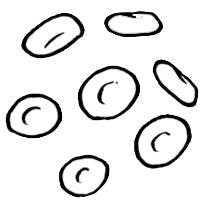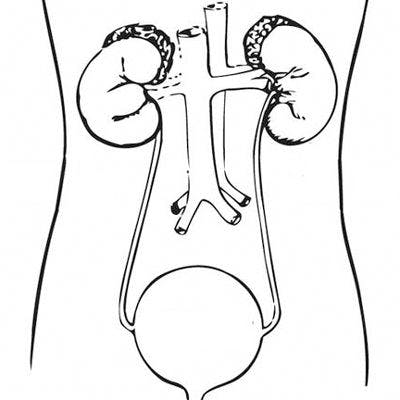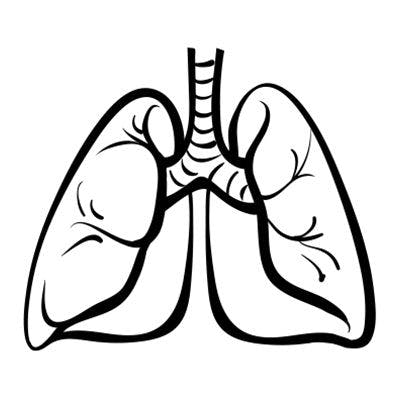Keep Vigilant for Signs of Peripheral Neuropathy in Relapsed/Refractory Diffuse Large B-Cell Lymphoma
Efficacy analyses by cell of origin and by MYC and BCL2 double expression status showed a trend toward improved outcomes of patients treated on the polatuzumab vedotin-containing arm regardless of cell of origin or MYC and BCL2 doubkle expression status.
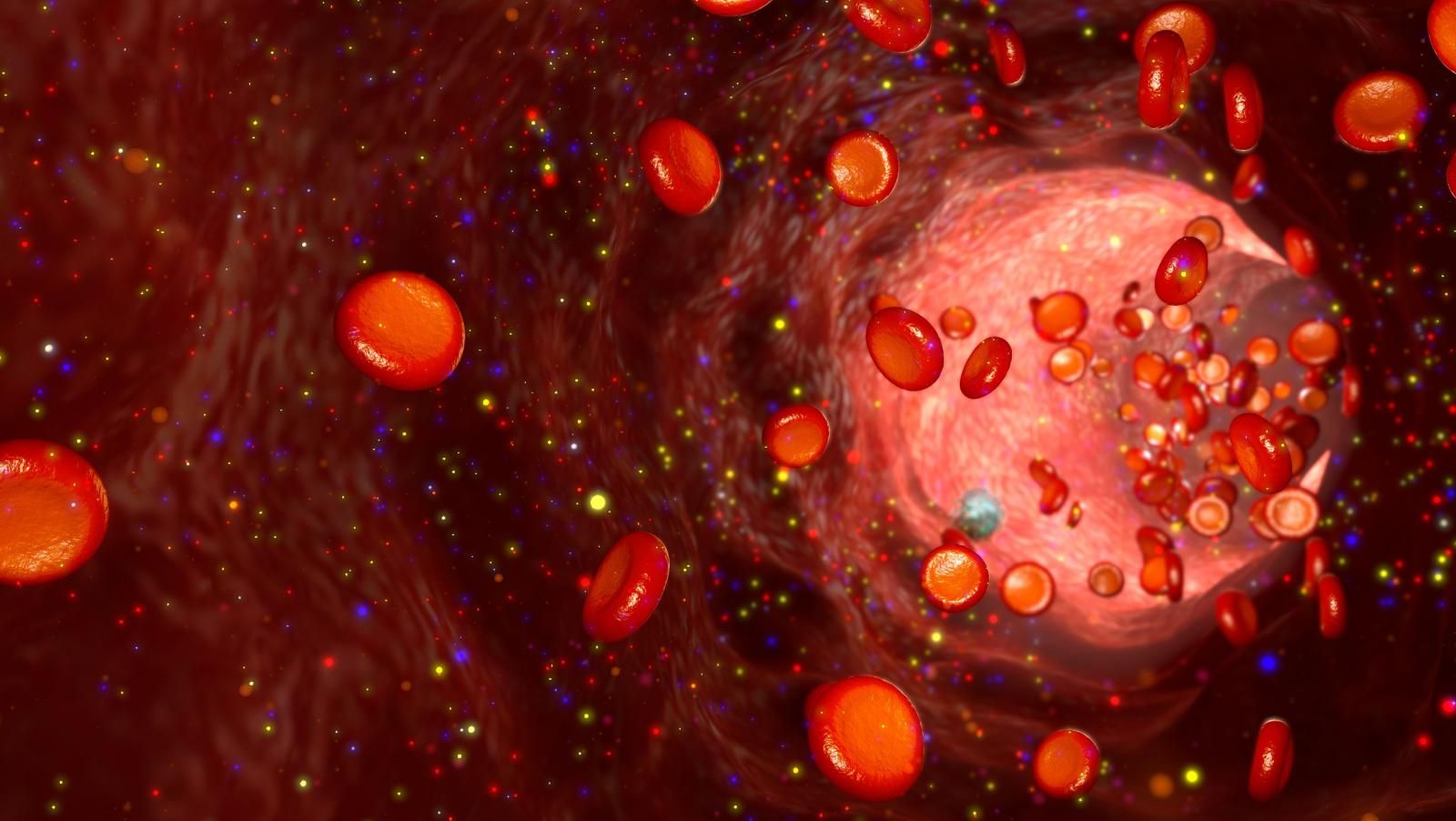
Polatuzumab vedotin (Polivy;PV) is an antibody-drug conjugate (ADC) targeting CD79b, expressed in the cell membrane of normal B cells and most B-cell malignancies, and delivers the micro­tubule inhibitor monomethyl auristatin E (MMAE). PV in combination with bendamustine and rituximab (Rituxan; BR), was granted accelerated approval by the FDA on June 10, 2019, for the treatment of patients with relapsed/refractory (R/R) diffuse large B-cell lymphoma (DLBCL) after at least 2 prior therapies.1The accelerated approval was based on results of the phase Ib/II GO29365 study that were initially present­ed at the 2018 American Society of Hematology Annual Meeting and recently published.1-3The approval is important because patients with R/R DLBCL, especially those ineligible for autologous hematopoietic stem cell transplant (auto-HCT), have limited treatment options, with an associated poor prognosis.
The study’s phase Ib safety run-in portion included 6 patients treated with PV plus BR. Treatment proved safe, and the most common adverse events (AEs) seen in >1 patient were fatigue, hypokalemia, nausea, decrease appetite, weight loss, diarrhea, hypocalcemia, pneumonia, and pyrexia. One patient had grade 3/4 AEs that included pneumonia, febrile neutropenia, and throm­bocytopenia. No grade 5 AEs occurred. Median follow-up was 37.6 months. The end-of-treat­ment complete response (CR) rate, determined by an independent review committee (IRC), was 50% (3 of 6), with these 3 patients expe­riencing ongoing remissions at a median follow-up of 37.6 months and a duration of response (DOR) of≥28.9 to≥38.2 months.
For the phase II cohort, 80 patients were prospectively randomized to either PV plus BR (n = 40) or BR alone (n = 40). Baseline characteristics were balanced; the median number of prior treatments was 2, with 20% of patients progressing after auto-HCT, and most patients were refractory to the most recent regimen. All patients had confirmed R/R DLBCL, and none had rearrange­ments of MYC with BCL2 and/or BCL6 (double- or tri­ple-hit lymphomas). The primary end point was CR rates assessed by an IRC. Secondary end points included DOR and progression-free survival (PFS) by IRC assessment.
After a median follow-up of 22.3 months, 16 (40%) patients had CR in the PV plus BR arm compared with 7 (18%) who received BR alone (P= .026). Median DOR by IRC was 12.6 months for the com­bination arm compared with 7.7 months in the BR-only arm (HR, 0.47; 95% CI, 0.19-1.14), showing a trend toward improvement that did not reach statistical significance. The median IRC-assessed PFS was 9.5 months with PV + BR and 3.7 months with BR (HR, 0.36; 95% CI, 0.21-0.63;P<.001), whereas the median investigator-assessed PFS was 7.6 months with PV plus BR versus 2.0 months with single-agent BR (HR, 0.34; 95% CI, 0.20-0.57;P<.001). PV plus BR also showed an improvement in the exploratory end point of OS, with a median OS of 12.4 months (95% CI, 9.0not evaluable) versus 4.7 months with BR (95% CI, 3.7-8.3 months; HR, 0.42; 95% CI, 0.24-0.75;P= .002).
Efficacy analyses by cell of origin and by MYC/ BCL2 double expression (DE) status showed a trend toward improved outcomes of patients treated on the PV-containing arm regardless of cell of origin or MYC/ BCL2 DE status. Nonetheless, the results were not sta­tistically significant due to small sample sizes.
The most common grade 3/4 AEs overall were infec­tions and cytopenias (TABLE).3,4Although infection and transfusion rates were similar between BR alone and with PV added, the rates of grade 3/4 cytopenias were higher in the PV plus BR arm. Lastly, PV plus BR treated patients had a higher incidence of peripheral neuropathy compared with the BR-only group (43.6% vs 7.7%, respectively), but there were no cases of grade 3/4 peripheral neuropathy in either group.2
Case: 71-Year-Old Woman With R/R DLBCL
A recent case involved a 71-year-old African American woman with poorly controlled type 2 diabetes melli­tus and sensory diabetic peripheral neuropathy of her lower extremities. She was diagnosed with stage IV DLBCL in June 2016. Initial pathology showed large B cells that were positive for CD20, MUM1, BCL2, and BCL6 by immunohistochemistry and negative for CD10. Fluorescence in situ hybridization for MYC rearrangements was negative. The final diagnosis was DLBCL, nongerminal center B-cell–like subtype. Staging PET-CT revealed multiple hypermetabolic lymph nodes above and below the diaphragm and hypermetabolic splenomegaly.
The patient was treated with 5 cycles of R-CHOP (rit­uximab, cyclophosphamide, doxorubicin, vincristine, and prednisone); a planned sixth cycle was omitted due to severe anemia and grade 3 fatigue, resulting in hospitalization. Restaging PET-CT at the end of treatment in November 2016 revealed a CR.
In May 2018, repeat PET-CT revealed a hyper­metabolic lung nodule, and a biopsy confirmed relapsed DLBCL that was BCL2 positive and BCL6 negative. Three cycles of second-line therapy with R-ICE (rituximab, ifosfamide, carboplatin, and etoposide) were given. The patient experienced no major AEs and, after achieving a second CR, underwent auto-HCT in October 2018 after con­ditioning with R-BEAM (rituximab, carmustine, etoposide, cytarabine, and melphalan). The patient developed mucositis andClostridium difi­cilecolitis, which later resolved, and she achieved a CR based on PET-CT.
The patient presented to the emergency department in June 2019 with worsening dys­pnea and cough while being treated for pulmo­nary histoplasmosis, which had been diagnosed 2 weeks earlier. Bronchoalveolar lavage and transbronchial biopsy revealed relapsed DLBCL with the same pathologic characteristics as before. She received 3 cycles of third-line chemotherapy with R-GEMOX (rituximab, gemcitabine, and oxaliplatin) but presented with worsening respiratory distress at the end of August 2019, and restaging CT showed disease progression.
Fourth-line treatment with PV plus BR was started in August 2019. One month after treat­ment began, CT of the chest, performed to rule out pulmonary embolism, showed resolution of previously noted lung nodules and medias­tinal lymphadenopathy. Because of worsening grade 3 peripheral neuropathy of the lower extremities, grade 3 fatigue, and constipation, the patient was unable to continue treatment with PV and received 3 subsequent cycles of BR at a 20% dose reduction from October through December 2019.
In January 2020, the patient presented to the hospital with altered mental status, and imaging revealed progression of disease, including possible central nervous system (CNS) lymphoma. A diagnostic lumbar punc­ture confirmed CNS involvement in DLBCL, and no further treatment was given. The patient transitioned to home hospice.
Chemotherapy-Induced Peripheral Neuropathy With PV
Chemotherapy-induced peripheral neuropathy (CIPN) is a common dose-limiting toxicity reported by patients receiving multiple dif­ferent chemotherapeutic agents.5Although CIPN is well described for traditional cytotox­ic chemotherapies such as platinum agents, vinca alkaloids, and taxanes, newer targeted therapies also carry significant risk of this important toxicity. In the phase Ib/II study discussed above,343.6% of patients receiving PV experienced any-grade new or worsening peripheral neuropathy, a term that encompass­es peripheral motor neuropathy, peripheral sensory neuropathy, decreased vibratory sense, hypoesthesia, and paresthesia. There were no cases of grade 3 or 4 CIPN with PV; however, the PV package insert notes that there was a 2.3% incidence of grade 3 CIPN among all 173 patients with B-cell lymphomas who received PV-based therapy in that study.4CIPN with PV had a median time to onset of 2.1 months and resulted in dose reductions or delays in 4.1% of patients. Like the patient in this case study, 2.9% of the 173 patients in the larger cohort permanently discontinued PV-based therapy due to CIPN. After a median of 1 month, 65% of patients had improved or resolved CIPN, with 48% experiencing complete resolution.4
The mechanism of CIPN is multifactorial and depends on drug class. ADCs such as PV often employ a microtubule inhibitor (MMAE in this case) as the cytotoxic payload.6Microtubule dis­ruption impairs axonal transport of lipids, pro­teins, and ion channels, leading to degeneration of distal nerve segments and hyperexcitability of peripheral neurons.7In a time-to-event analysis of PV-induced peripheral neuropathy, a predic­tive model suggested that CIPN risk increases with exposure and treatment cycles, and a trend toward increased incidence with higher body weight and decreased serum albumin con­centration was seen.8
Treatment of CIPN is not well defined. The most recent American Society of Clinical Oncology guidelines, published in 2014, found that the best available evidence supported the use of duloxetine (Cymbalta) and made no recommendations on other agents.9Duloxetine is started at a dose of 20 to 30 mg once daily. Although there is no evidence of greater efficacy at higher doses, a maximum dose of 120 mg/day is allowable. Gabapentin is a com­monly used agent in this setting because it is supported by data in non-CIPN, such as diabetic neuropathy. However, it is important to remem­ber that neuropathy may occur via different mechanisms, and the proper treatment depends on the etiology. Thus, treatment decisions for CIPN should not be extrapolated from data from trials in other types of neuropathy.9,10
Due to the paucity of data, additional trials of CIPN treatments are warranted to help alleviate this painful condition. In the spe­cific case of PV-related grade 2 or 3 periph­eral neuropathy, treatment should be held for 2 weeks until improvement to grade 1 or lower. Subsequent doses should be permanently reduced to 1.4 mg/kg. If peripheral neuropa­thy does not recover to at least grade 1 by day 14, PV must be discontinued. Also, if a prior dose reduction has occurred and the patient experiences recurrent grade 2 or 3 peripheral neuropathy, PV must be discontinued. PV must not be restarted if grade 4 CIPN occurs.4
References
- DA approves polatuzumab vedotin-piiq for diffuse large B-cell lymphoma. Published June 10, 2019. https://bit.ly/36qotEM. Accessed January 23, 2020.
- ehn LH, Herrera AF, Matasar M, et al. Polatuzumab vedotin (pola) plus bendamustine (B) with rituximab (R) or obinutuzumab (G) in relapsed/refractory (R/R) diffuse large B-cell lymphoma (DLBCL): updated results of a phase (Ph) Ib/II study. Blood. 2018;132(suppl 1):1683. doi: 10.1182/blood-2018-99-118551.
- Sehn LH, Herrera AF, Flowers CR, et al. Polatuzumab vedotin in relapsed or refractory diffuse large B-cell lymphoma.J Clin Oncol.2020.10;38(2):155-165.
- Polatuzumab vedotin [package insert]. https://www.gene.com/download/pdf/polivy_prescribing.pdf. South San Francisco, CA: Genentech, Inc; June 2019.
- Staff NP, Grisold A, Grisold W, Windebank AJ. Chemotherapy-induced peripheral neuropathy: A current review.Ann Neurol. 2017;81(6):772-781. doi:10.1002/ana.24951
- Zajączkowska R, Kocot-Kępska M, Leppert W, et al. Mechanisms of chemotherapy-induced peripheral neuropathy.Int J Mol Sci. 2019;20(6):1451. doi:10.3390/ijms20061451
- Lu D, Gillespie WR, Girish S, et al. Time-to-event analysis of polatuzumab vedotin-induced peripheral neuropathy to assist in the comparison of clinical dosing regimens.CPT Pharmacometrics Syst Pharmacol. 2017;6(6):401-408. doi:10.1002/psp4.12192.
- Hershman DL, Lacchetti C, Dworkin RH, et al. Prevention and Management of chemotherapy-induced peripheral neuropathy in survivors of adult cancers: American Society of Clinical Oncology Clinical practice guideline.J Clin Oncol. 2014;32(18):1941-1967. doi: 10.1200/jco.2013.54.0914.
- Stubblefield MD, Burstein HJ, Burton AW, et al. NCCN task force report: management of neuropathy in cancer.J Natl Compr Cancer Netw. 2009;7(suppl 5): S1-S26. doi: 10.6004/jnccn.2009.0078.
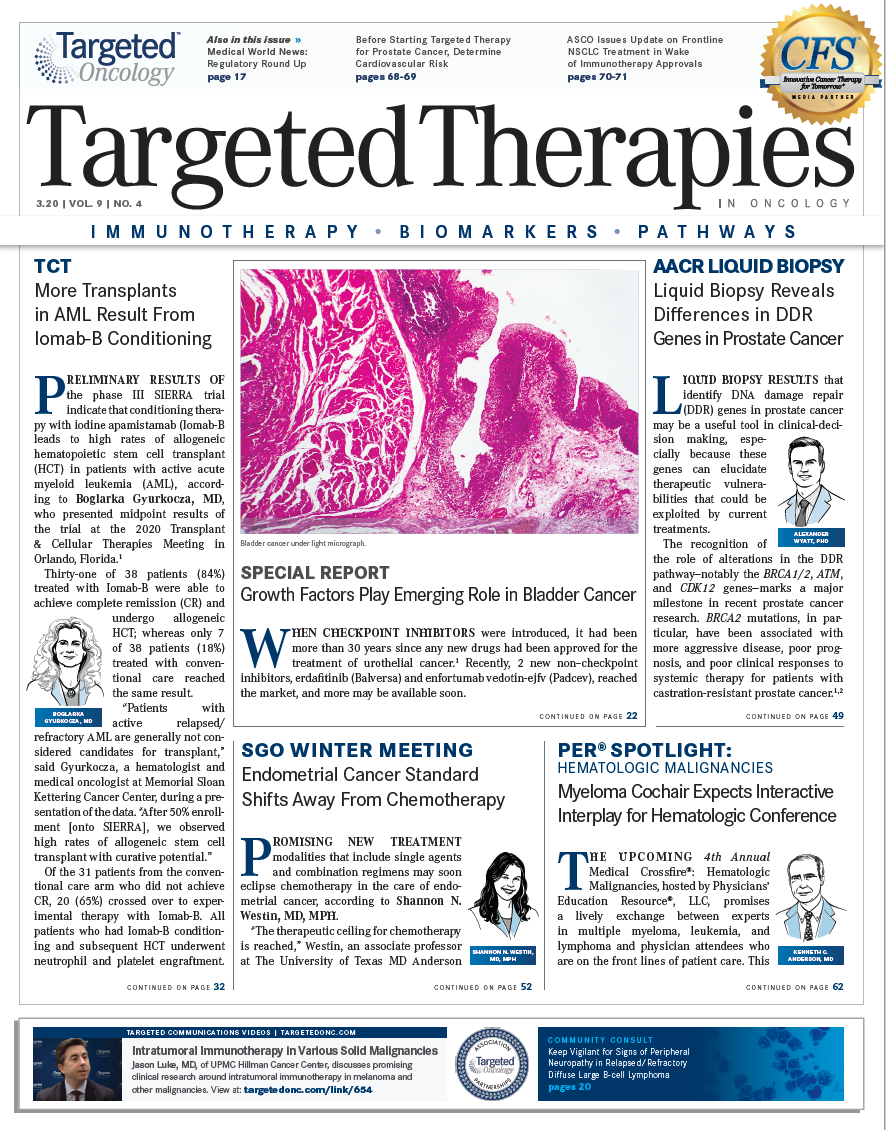
Examining the Non-Hodgkin Lymphoma Treatment Paradigm
July 15th 2022In season 3, episode 6 of Targeted Talks, Yazan Samhouri, MD, discusses the exciting new agents for the treatment of non-Hodgkin lymphoma, the clinical trials that support their use, and hopes for the future of treatment.
Listen


